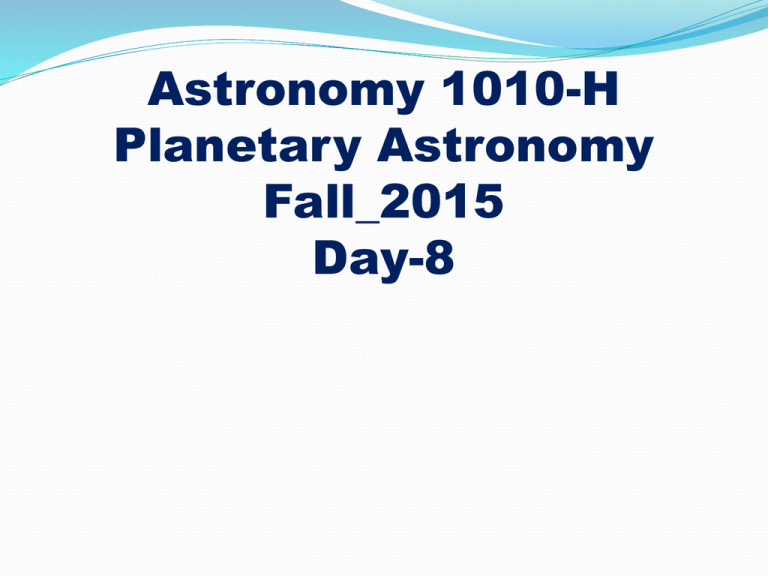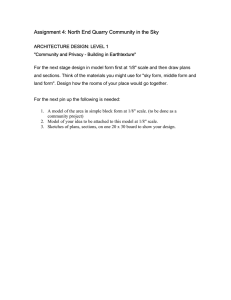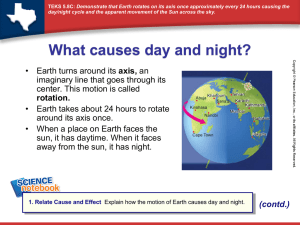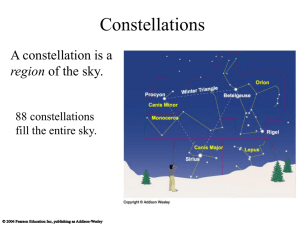Astronomy 1010-H Planetary Astronomy Fall_2015 Day-8
advertisement

Astronomy 1010-H Planetary Astronomy Fall_2015 Day-8 Course Announcements • • • • • • • • • Read Chapter 2 How is the lunar observing going? How is the sunset/sunrise observing going? 1st Quarter night – Mon. 9/21 -7:30pm – on campus Exam 1: Fri. Sept. 18 or Mon. Sept. 21 This weekend: Thurs. - Sat. – Riverfest This week: National Adopt a pet week Next Week: APSU-OUR: Research & Creative Activity Week. Events in the library 2:30-3:30 every day. Astro-group meeting today 2:30pm, E109 Spacecraft Reports • • • • • • • • • • • Chantal H. – New Horizons Ashley G. – Dawn Mahalia S. – NuStar Tristan C. – Mangalyaan Spencer B. – Voyager Arielle P. – Curiosity Rover Lars A. – Cassini Sarah E. – Mars Odyssey John M. – Mars Phoenix Jordan T. – Galileo Rashun B. – Apollo Missions Definitions & Terms -1 • • • Season: A time of year characterized by a general weather pattern (meteorological) or a location of the Earth in its orbit around the Sun (astronomical). Solar Day: 24 hours. The average time between successive meridinal transits of the Sun. Sidereal Day: 23h 56m. The time between successive meridinal transits of a star. Stuff in Chapter 2 • • • • • • • • • Coordinates Position Daily Motion (spin of Earth on its axis) Visibility of the sky Year Motion (Earth orbits the Sun) Seasons (tilt of the Earth’s axis) Precession of the equinoxes Motion and phases of the Moon Eclipses So, the Earth moves in two ways that affect what we see Orbital motion around the sun causes seasonal changes in the constellations Rotational motion around the polar axis causes changes over the course of the night Lecture – Tutorial Solar vs Sidereal Day: pg 11 Work with a partner! Read the instructions and questions carefully. Discuss the concepts and your answers with each other. Come to a consensus answer you both agree on. If you get stuck or are not sure of your answer, ask another group. If you get really stuck or don’t understand what the Lecture Tutorial is asking, ask one of us for help. Why does the sky change during the course of a night? The Earth rotates about its’ polar axis so the stars make circles around the celestial pole over the course of a night Why does the sky change with your location? As you move away from the pole your horizon moves with you but the locations of the celestial poles and celestial equator remains the same Stuff in Chapter 2 • • • • • • • • • Coordinates Position Daily Motion (spin of Earth on its axis) Visibility of the sky Year Motion (Earth orbits the Sun) Seasons (tilt of the Earth’s axis) Precession of the equinoxes Motion and phases of the Moon Eclipses Why does the sky change over the course of a year? As we orbit the sun the direction opposite the sun changes and we only see the stars when the sun is not up Lecture – Tutorial Seasonal Stars: pg 7 Work with a partner! Read the instructions and questions carefully. Discuss the concepts and your answers with each other. Come to a consensus answer you both agree on. If you get stuck or are not sure of your answer, ask another group. If you get really stuck or don’t understand what the Lecture Tutorial is asking, ask one of us for help.


